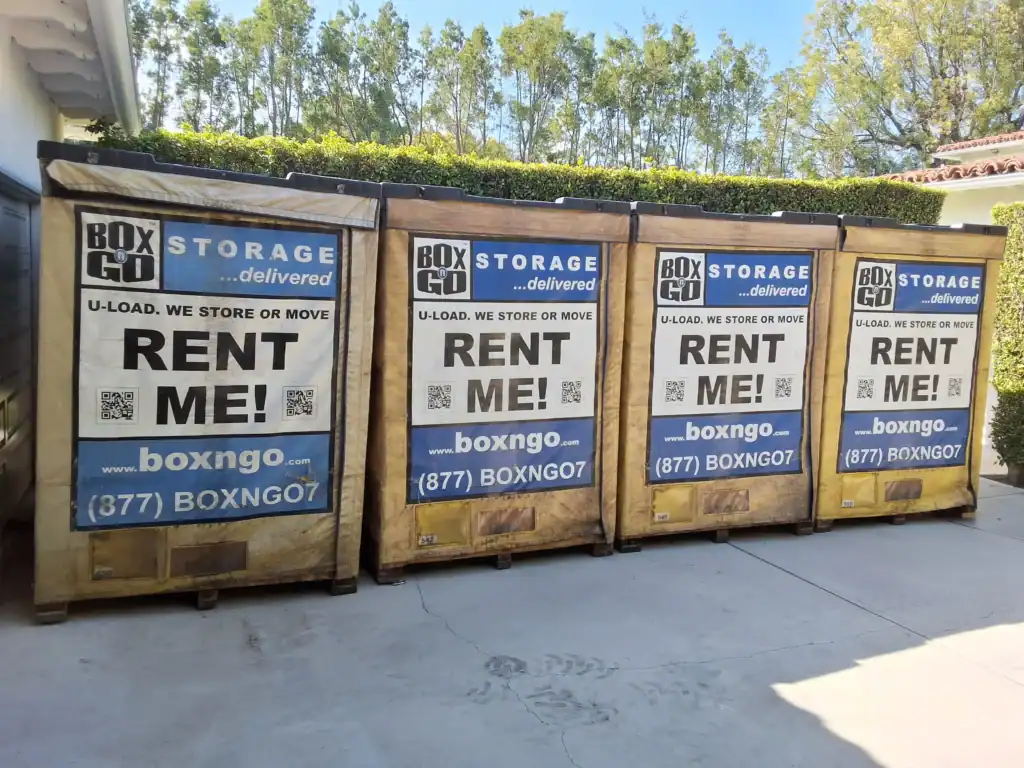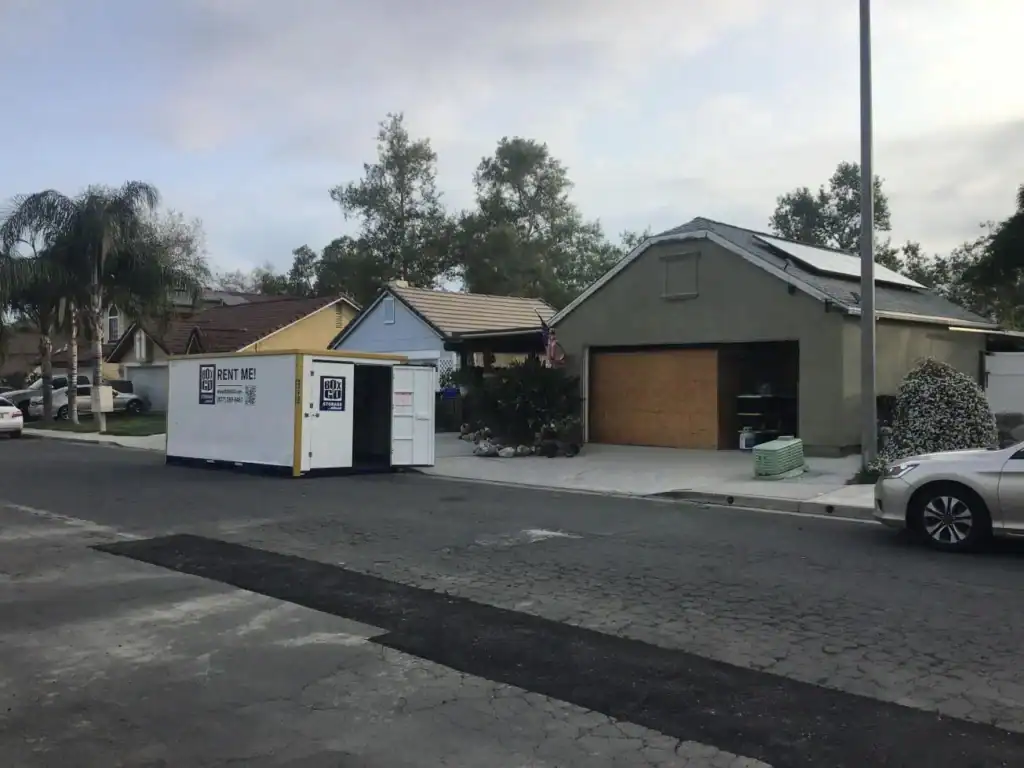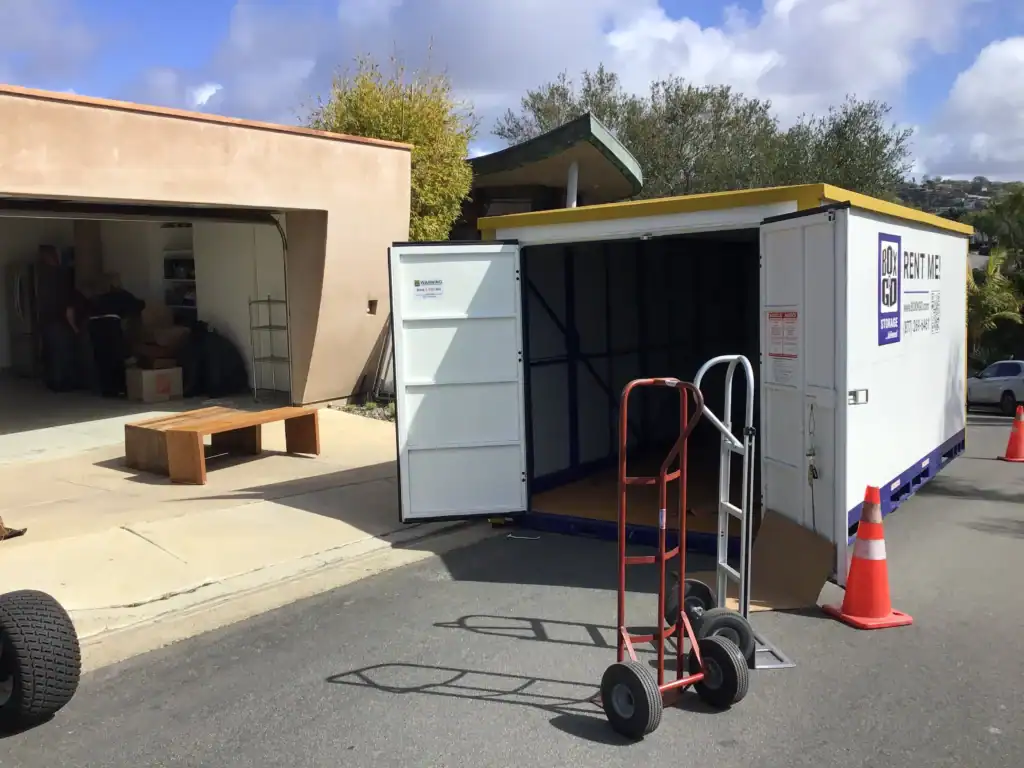Permit for Portable Storage: Do You Need a Container Permit for a Storage Container, Portable Storage Container, Pod, or Storage Building Under Zoning Laws and Building Codes?

When you place a portable storage container on your property or along a city curb, the first question that comes up is simple: do you need a permit? In most jurisdictions, the answer is yes—especially if the storage container will sit in the public right-of-way or could interfere with traffic, sidewalks, or property lines. Cities often classify these as temporary structures or even accessory structures, which makes them subject to building codes, zoning laws, and municipal ordinances.
A container permit is typically required for the temporary placement of a portable storage container, whether you call it a storage pod, storage unit, or portable storage building. The goal of local governments and zoning administrators is to ensure compliance with safety rules, protect egress and vehicular access, and prevent long-term use from turning into unregulated permanent structures. Some homeowners may find that permits for storage are not required if the unit sits fully on private land, but in dense areas, regulations usually apply.
Bottom line: if you plan to put a shipping container in your driveway or on the street, you’ll need to check with your local planning department or department of transportation. Failing to obtain a permit may result in citations, additional fees, or an order to remove the unit altogether.
Permit Basics for Portable Storage Containers and Storage Buildings
When it comes to portable storage, many homeowners ask, “Do I need a permit for a container on my property?” The truth is, whether you need a permit depends on zoning regulations, your neighborhood zone, and the building regulations that are applicable where you live. In many cities, the placement of a portable storage container in a driveway may be lenient compared to street or curbside placement, which almost always triggers stricter regulation.
When You May Need a Container Permit
Most municipalities require a container permit if your storage container sits in the public right-of-way, such as on the street or sidewalk. This is because local authorities must ensure compliance with safety standards, vehicular flow, and egress. Depending on staff review, you may be required to post signage or provide a certificate of insurance before the permit is approved.
Temporary vs. Permanent Placement
A permit for portable storage is usually tied to temporary use—a short-term moving project, remodel, or seasonal clean-out. However, if the storage building is installed with permanent foundations or used as an accessory structure, additional building regulations and zoning oversight apply. In those cases, you must contact the planning department or zoning administrator to confirm the applicable codes and submit the required submittal documents.
Key Regulations You Must Abide By
- Containers must meet setback requirements from the property line.
- A permit is required if a unit obstructs vehicular lanes, sidewalks, or egress points.
- Some municipalities mandate notification to neighbors or the homeowners association (HOA).
- Failure to obtain a permit may result in fines, an appeal process, or an order to remove the unit.
Step-by-Step to Obtain a Permit for a Portable Storage Container on My Property

The process of securing a permit for portable storage may feel restrictive, but most municipal codes are clear once you know where to look. Whether you’re placing a storage container in a driveway, curb, or lot, the city and county will likely have permit requirements that you must meet. Here’s how to navigate the system:
Step 1 – Confirm Placement and Zoning Regulations
Decide whether the container on my property will sit on private land or in the public zone. Local governments often apply more lenient rules for driveways, but stricter zoning laws and building regulations if the unit is near a sidewalk or in the right-of-way. Check with your planning department or zoning administrator to ensure compliance before delivery.
Step 2 – Contact the Applicable Department
You must contact the correct office—often the department of transportation, public works, or building department. They will explain if a permit is required, how long the review takes, and whether signage or insurance is applicable. In most jurisdictions, you must apply in advance; some even require submittal of photos and square feet dimensions of the unit.
Step 3 – Gather Required Documents
To obtain a permit, applicants typically need:
- Service address and property zoning classification.
- Size of your storage unit (e.g., 10’, 20’, 40’).
- Name of your container provider.
- Duration of placement (temporary use or long-term installation).
- Proof that the unit won’t block egress or vehicular access.
- Step 4 – Apply and Ensure Compliance
Most cities require permits for storage to be filed online or in person with the municipality. The applicant must apply early, abide by deadlines, and pay fees. Depending on staff workload, approval may be required from multiple departments. Always ensure compliance with local building codes and zoning regulations.
Tip: Keep a copy of your approved permit posted on site. Inspectors may be required to check signage and confirm that your container is fully compliant.
Rules, Restrictions, and Regulations in Urban Zones
When placing a portable storage container in a dense neighborhood, strict zoning regulations and municipal ordinances apply. Local governments want to ensure safety, keep public areas accessible, and prevent a temporary structure from becoming a permanent nuisance. If you don’t comply, you may face fines, towing, or an order to remove the unit.
Street Placement and Setback Requirements
Cities typically mandate setbacks from the property line and corners to maintain clear sightlines for vehicular traffic. Blocking sidewalks, fire hydrants, or driveways is prohibited. Many ordinances also restrict placement in alleys or near egress points to ensure emergency access.
Time Limits and Temporary Use
Most municipalities only allow temporary placement of a portable storage container—from a few days to a few weeks. If the structure is treated as a storage building or accessory structure with permanent foundations, then a building permit is required. This distinction is crucial: temporary use may be lenient, but long-term use usually triggers building codes and more restrictive oversight.
Signage, Notification, and Safety Measures
Some cities mandate visible signage or no-parking notices to reserve curb space. Others require notification to neighbors, the homeowners association, or the HOA board before placement. Safety rules often require cones, reflective tape, or barricades to mark the zone clearly. These measures ensure compliance with zoning laws and protect pedestrians.
Enforcement and Local Authority Oversight
Enforcement is handled by local authorities—often the department of transportation or public works. Inspectors may issue citations if a container exceeds the allowed timeframe, fails to meet clearance requirements, or violates zoning laws. In some cases, the applicant can appeal, but the container must meet all permit requirements to stay.
Tip: Always check with your local planning department and confirm permit requirements before delivery. A little planning ensures compliance and avoids last-minute conflicts with city inspectors or your HOA.
Building Codes, Zoning Laws, and HOA Considerations
A portable storage container may start as a short-term solution, but under many zoning laws it can quickly be classified as a storage building or accessory structure. Once that happens, you move from simple curbside rules into building codes and stricter legal requirements.
When Building Regulations Apply
Most municipalities say a building permit is required if the container is placed on permanent foundations, connected to utilities, or converted into habitable space. Under the IBC/IRC and local building regulations, any installation that changes the use of a storage container into a permanent structure must be fully compliant. That means setbacks, slab installation, and inspection submittals may be required.
Example: If you put a shipping container in your yard for temporary use, you may be covered under lenient temporary rules. But if you wire it for electricity or plumbing, it becomes a regulated storage building, and inspectors will mandate compliance with local building codes.
Zoning Laws and Property Restrictions
Zoning regulations determine whether a portable storage container within a residential or commercial zone is allowed. Single-family lots typically require shorter timeframes than commercial projects. In some cases, the zoning administrator or planning department may be required to review your application. Always check with your local authorities to ensure compliance with applicable ordinances.
HOA and Homeowners Association Rules
Even if the city permit is not required, your homeowners association may still have restrictive rules. HOAs often limit visible containers, mandate appearance standards, and require advance notification. Some even set a maximum size of your storage unit in square feet or limit placement near property lines.
Tip: Map your approvals in order—first confirm with the city, then obtain HOA or deed restriction sign-off, and finally schedule delivery with your container provider. This sequence ensures no last-minute surprises on move day.
What Homeowners Should Keep in Mind
- Always check with your local HOA and city planning department.
- Some ordinances require permits for storage even on private lots.
- Failure to abide by HOA or zoning mandates may result in fines or an order to remove the container.
- Written approval ensures compliance and protects you from appeal or enforcement issues later.
Costs, Container Sizes, and Practical Planning Tips
Understanding how much a portable storage container permit costs and how the size of your storage unit affects placement rules will help you plan effectively. While fees vary by municipality, most cities charge between $20 and $100+ depending on duration, location, and whether you’re blocking a public right-of-way.
Typical Fees and Permit Requirements
- Short-term permits for storage: $20–$100 for a few days on the curb.
- Longer-term placement: higher costs, often paired with building permit requirements and insurance.
- Driveway placement: may be exempt, but always check with your local governments, since rules differ by jurisdiction.
Size Options and Placement Rules
The size of your storage unit matters. Common lengths are 10’, 20’, 40’, and 40’ high-cube. Larger units may exceed setback limits or block vehicular access. Many cities require permits only for containers above certain square feet thresholds or for those extending into the public zone.
Tip: Smaller pods and modular containers are easier to place legally in tight urban zones.
Safety, Security, and Signage in Busy Areas
Cities often mandate signage and reflective cones to mark the container zone. In some cases, inspectors will check egress, vehicular flow, and even mandate lighting for overnight placement.
- Ensure compliance by posting signage the number of days required by your city and county.
- Some municipalities mandate a slab or reinforced surface if the storage building is heavy.
- Always abide by notification rules—some require you to alert neighbors or the HOA.
Why Planning Ahead Matters
Failing to obtain a permit may lead to restrictive enforcement, added costs, or an order to remove the container. A fully compliant application, backed with all required submittals, ensures approval and avoids setbacks. Work with your container provider to confirm what’s applicable, since they often know the rules by city and county.
Tip: Ask if staging multiple containers in phases is allowed—it can cut truck time, labor, and reduce conflicts in narrow urban streets.
Why an Expediter Helps in Restricted Zones

Expediters submit your application, post required signage, and coordinate with the planning department or department of transportation. They help ensure compliance with every ordinance, from setbacks to property line clearances. In high-traffic areas, this service can save you from missed deadlines, restrictive denials, or orders to remove the unit.
- Expediter manages the applicant process with local governments.
- They confirm what’s applicable for your property zoning.
- They liaise with inspectors and local authorities on move day.
Box-n-Go: Your LA-Smart Storage Solution
If you don’t want the headache of juggling container permits and regulations, Box-n-Go offers a better way. As a trusted container provider serving Los Angeles since 2006, we understand the city and county requirements, HOA rules, and how to stage delivery without violating local mandates.
With Box-n-Go, you get:
- Delivery and pickup windows that comply with city restrictions.
- Secure storage containers that protect your belongings.
- Local expertise to guide you through permit rules and HOA notifications.
Call 877-269-6461 today to confirm permit requirements for your address and book a Box-n-Go container.
Conclusion
Getting a permit for portable storage doesn’t have to be complicated, but it does require planning. Whether you’re placing a portable storage container on the street, in your driveway, or near the property line, local zoning laws and building codes may apply. A little preparation ensures compliance, avoids fines, and prevents an order to remove the unit.
If you want a stress-free move, Box-n-Go offers portable storage solutions tailored to Los Angeles, with delivery, pickup, and guidance on what permits are applicable at your address.
Call 877-269-6461 today to obtain the right container and ensure compliance with local regulations.
FAQ
Do I need a permit for portable storage?
Yes, in most municipalities a permit is required when placing a portable storage container in the street or right-of-way. If the unit stays on private property, rules are often more lenient, but you should always check with your planning department
When might a container permit be applicable?
A container permit is typically applicable if your unit blocks sidewalks, vehicular traffic, or sits in a public zone. Rules also apply when the storage container exceeds setback requirements or is near a property line.
What if I only plan temporary placement of a portable storage container?
Temporary use may require only a short-term permit, while long-term placement or use as a storage building usually triggers stricter building regulations.
How do I obtain a permit for a container on my property?
You must apply through your city or county planning department or department of transportation. The applicant will need to provide address, dates, size of your storage unit, and details of the container provider.
What are common permit requirements?
Most permits for storage require: signage, notification to neighbors or HOAs, compliance with zoning regulations, and ensuring egress is not blocked. Some municipalities also mandate slab installation or setback clearance.
Do HOAs or homeowners associations affect container placement?
Yes. Homeowners associations often have restrictive rules. You may need HOA approval even if the city says a permit is not required. Always confirm with your HOA to ensure compliance.
How much do permits for storage typically cost?
Fees vary by municipality, but they typically range from $20–$100 for temporary use. Larger containers or long-term use may cost more and trigger additional inspections.
Can a permit expediter help me?
Yes. An expediter can handle submittals, signage, and communication with local authorities. They ensure your application is fully compliant and help prevent delays.
What’s the easiest way to stay compliant?
Work with Box-n-Go. As a local container provider, we understand permit requirements across Los Angeles. We’ll help you choose the right portable storage container and guide you through approvals so your move is simple and compliant.


